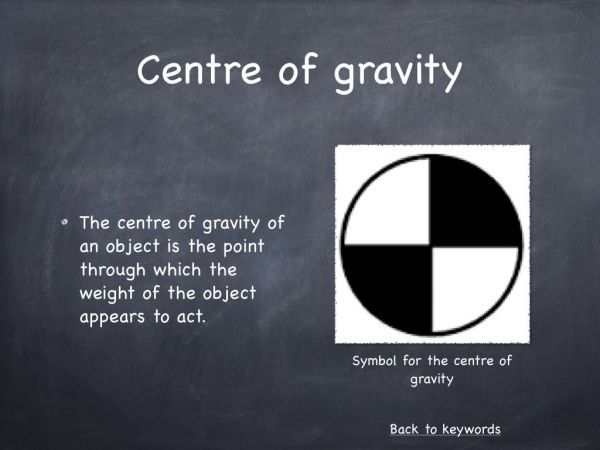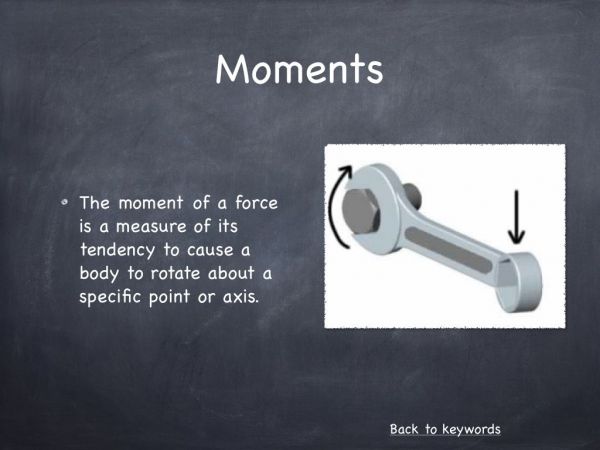This demonstration essentially takes objects that do not intuitively balance and puts them together. The idea behind this is to trigger students’ imaginations and to get them thinking about the centre of gravity of different everyday objects.
Methodology
Materials
- Beaker (3/4 full of water)
- Toothpick
- Spoon
- Fork
- Hammer
- String
- Ruler
Method
Please note that there are no set rules for performing these demonstrations. To get these to work takes time and a lot of trial and error.
1. Toothpick, spoon and fork
Interlock the spoon with the fork. The spoon should cover 50% of the centre two prongs of the fork. Place the toothpick in the gap between the top and second prong of the fork. Place the toothpick onto the side of the beaker. Approximately 1/3 of the toothpick should be hanging over the inside of the beaker with the other 2/3 with the fork and spoon over the edge. This will take some time to perfect. Use the video for guidance.
2. Hammer and ruler
The key to this one is getting the length of the string correct. The string should be approximately 8/10ths the length of the hammer. The hammer is tied near the top (its head) and the ruler is tied at the base (it is easier to use a ruler with a hole at the bottom). Set up the apparatus as shown in the video. Again this will take some time to perfect.
3. Sledgehammer and Ruler
Unbelievably the sledgehammer experiment is easier to perform than the hammer one. It’s the exact same process as before, however, one has to be aware that when using a sledgehammer there is an increased level of danger especially when demonstrating in front of a class.
Tips
Use the videos as guidance and be persistent as it may take a number of attempts to perfect.
*Precautions/Safety*
Theory behind the hook
The centre of gravity of an object is the point through which the weight of the object appears to act. A good example is a seesaw (Figure 3). In A, the seesaw is unbalanced due to there being unequal moments or forces on both sides of the stand. In B, the seesaw is again unbalanced; however, this is due to the weights on the right hand side pulling that side downwards. In C, the seesaw is completely balanced. This is because there is an equal amount of the seesaw on both sides of the stand and no other weights are unbalancing it. The centre of gravity is the reason why the seesaw is a poor playground amusement. It’s difficult to find two people with the same mass. When two people use a seesaw and don’t have the same mass, the seesaw won’t work effectively because it’s unbalanced. In the first experiment, the centre of gravity is located at the point where the toothpick touches the beaker. For the hammer experiments, the centre of gravity is located at the point where the ruler touches the table.
How this hook works
This hook simply uses the wow and cool factor to draw pupil’s attention. None of the balancing items look like they should balance and the experiments keep getting bigger and better as the video continues. The sledgehammer is the icing on the cake of the video as many Junior Cycle students wouldn’t be able to lift a sledgehammer, never mind balance one with a ruler.
This hook works due to the principles of lever (moment) and center of gravity so the fork and spoon can be kept in balance. The center of gravity of the system is located under the contact points (also known as a pivot points) of the toothpick made with the glass. The position of the toothpick until the moments of both sides are equal and the center of gravity is located under the contact points (pivot points) of the toothpick and the glass, then the fork and spoon shall not fall. For the system to be static equilibrium, both force and moment shall be in balance. Since the center of gravity of this system is under the pivot point, when the system is tilted to one side, there will be a recover moment to turn it back to the equilibrium position.
The hammer experiment and sledgehammer experiment operate under the same principle. The centre of gravity for the hammer is located under the contact point of the plastic ruler and table. The centre of gravity for the sledgehammer is located under the contact point of the timber ruler and table.
Questions & Answers
- To resist being toppled, why does a wrestler stand with his feet apart?
The wrestler’s centre of gravity is lower when they stand with their legs spread out rather than their feet together. - Why do you often see people carrying very heavy weights on top of their heads?
When you carry a weight on top of your head, the centre of gravity of the object is in line with the centre of gravity of your body. This means that the weight is balanced and is easier to carry. - Which of the following has the lower centre of gravity?
A has a lower centre of gravity due to its lower height and wider base. - Which bottle is the most stable?
A is the most stable. It has the lowest centre of gravity due to having the widest base. - In the previous diagram, why is B the most unstable?
B is unstable because it is resting on a curved edge. If this bottle experienced a force, it would roll off of the table.
Cross Curricular Links
The main real world link is that this type of demonstration improves critical thinking and problem solving. These skills are highly important for subjects like Maths and Design and Communication Graphics.
Numeracy
Moment of a force (N m) = force (N) X perpendicular distance from the force of the fulcrum (m).








